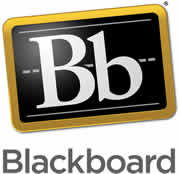by Steve Taylor
For almost ten years, Vassar faculty and students have used the Blackboard system for sharing files and communicating within their classes. As we ring in the new year and ring out the old, Blackboard is one of the things we’re leaving behind. Here’s a little background on how we got to where we are.
By the late 1990s, many faculty members were learning HTML and creating websites for their courses, but quite a few colleges and universities had begun using “course management systems” or “learning management systems” to give their faculty an easy way to make course materials and activities available to their students online. There were a number of competing products— Blackboard, WebCT, Angel, “Web Course in a Box,” CourseInfo, First Class, WebBoard, and others. I was interested in this development, but decided to wait a bit and see how the competitors fared.
By 2001, it was clear that Blackboard would become the dominant product in the marketplace. Since so many dot-coms were dying early deaths, that seemed a good enough reason to choose Blackboard. I approached the Director of CIS (Diane Balestri) and proposed that we adopt Blackboard. She wasn’t convinced about the prospects of this new technology, but suggested that if I could purchase it with my existing budget, we could try it. (Luckily, the initial offering was cheap.)
In the fall of 2001, we had our initial trial— about a dozen instructors used Blackboard for 19 courses. (More than a third of them were Chemistry courses.) Blackboard’s use grew dramatically:
There were a fair number of complaints about how Blackboard functioned, but Blackboard Inc. was very poor at responding to suggestions or even bug fixes. And the cost had grown to more than $40,000 annually. So in 2008, we began exploring alternatives and eventually decided to replace Blackboard with Moodle. Moodle is an open-source program, which means that anyone can customize the program to their liking. At Vassar, we’ve taken advantage of that by adding and removing functions, clarifying wording, creating our own look and feel, etc.
As of fall 2010, no active courses were using Blackboard, but the server was still available for instructors to access old sites. As of December 31, the server has been shut down. (ACS maintains archives of all Blackboard course sites, which can be imported into Moodle at any time in the future.)
Moodle has been enthusiastically welcomed by many, but the transition has not been easy. Once everyone is fully out of the transition stage, though, I think they’ll be quite happy with Moodle. And if there’s anything we don’t like about it, we can probably change it!




Tom: There was no (good) turnkey way of just replicating Blackboard sites in Moodle. In fact, we encourage instructors to use a week-by-week layout, like a syllabus, which is quite different from the typical Blackboard organization, so a turnkey process would have been unsatisfactory anyway. We were able to migrate the files for each course, but instructors have to rebuild the student interface to those files. Many were happy to do it, but it was not a trivial effort for them.
Interesting article, Steve. Our two-year college is looking into alternatives to our current system, ANGEL, which is a product that Blackboard bought a few years ago; apparently, as of 2014 they won’t be maintaining it, so we need to shop around. I’d be interested in your take on some of the other systems out there, like Moodle. For example, you mentioned that the transition to Moodle wasn’t easy. Can you elaborate?
We love Moodle at Holy Cross!
Nice overview Steve. We too have chosen to migrate to Moodle after a one year head-to-head runoff with it against Sakai.
We’re doing a 2-year migration, but are ahead of schedule. I would bet our adoption graph would look quite similar to yours.
Todd
Nice write-up, Steve. We also looked around the market and seriously considered the Sakai/OSP combination, but Moodle’s simplicity and support from a large development and user community made it a good choice for us.
Good luck with your implementation. I hope to hear more about it in the future!
Jon